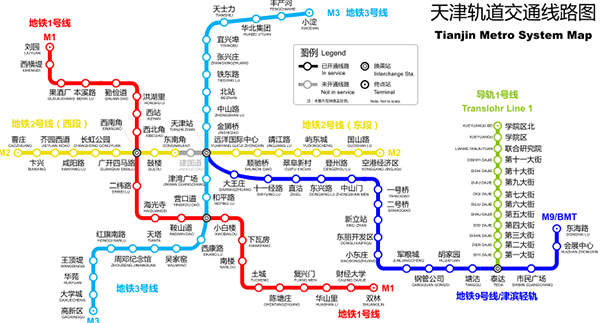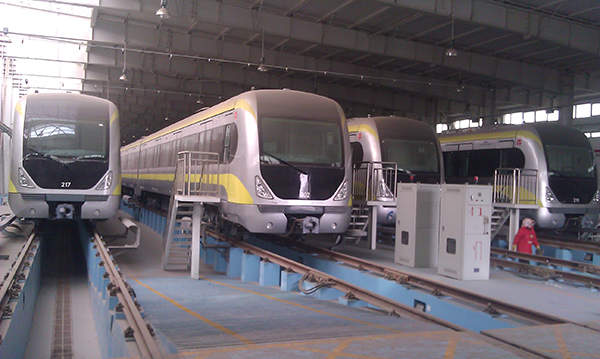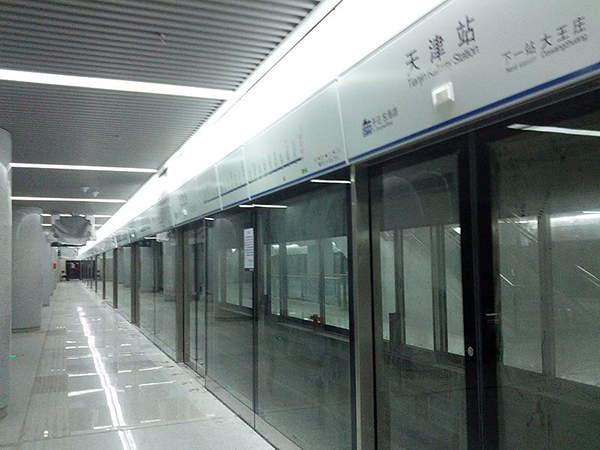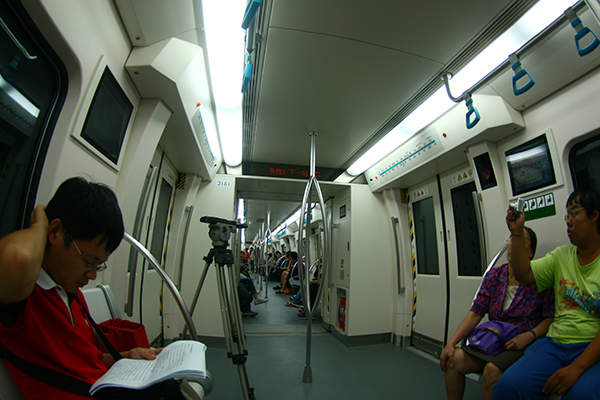
Tianjin Metro, a Chinese rapid transit network was the second city in the country with a rapid transport system. Tianjin Metro Group and Binhai Mass Transit Development jointly operate the metro.
The Tianjin metro system stretches over 109.5km and includes four lines with 67 stations, as well as one tram line. Lines 2 and 3 of the metro were inaugurated recently, in July and October 2012 respectively. Annual ridership of the Tianjin metro is around 41.8 million passengers.
History of the metro project in Tianjin
Tianjin is a major commercial city in the Republic of China with the presence of an inland harbour. Trade and travel by roadways increased pollution and congestion in the city; a rapid transit system was therefore planned to address this problem.
Construction of the system started in the 1970s. The first section of the Tianjin metro line, with 3.6km of track and four stations, was opened in February 1976. Further construction on the metro was delayed due to an earthquake that hit the city in 1976. The second included two stations and 1.6km of track, and was completed in 1980. The entire stretch of the first line with eight stations became operational in December 1984
The first line of the metro was unable to cope up with the increasing traffic and massive expansion plans were formulated in 2000. The system was closed for renovation in September 2001 and was reopened in December 2006. Line 1 was expanded to 26.2km during the renovation.
Additional lines were planned and constructed simultaneously. Construction of Line 9 began in 2001 and its first section was opened in March 2004. A number of stations were added to the line between 2004 and 2007, while three new stations were added in May 2011. The tram line, TEDA Modern Guided Rail Tram, was opened in May 2007.
Related project
Chongqing Metro, China
Chongqing Metro or Chongqing Rail Transit is a 75km rapid-transit system, serving the city of Chongqing in China. The metro commenced operations in 2005 and serves the needs of nearly 32 million people.
Line routes of Tianjin Metro
Line 1 of the Tianjin Metro stretches 26.2km and has 22 stations in total, with two tracks across a 1,435mm track gauge.
Telvent was awarded a contract in March 2004 for the supply, installation, testing and commissioning of a fully contactless, automated fare collection (AFC) system for Line 1. The project was completed by the end of 2006.
Line 2, inaugurated in July 2012, stretches 23.5km and has 19 intermediate stations. The Eastern section stretches from Tianjin Railway Station to Tianjin Airport Economic Area, while the western section stretches from Cao Zhuang to Dongnanjiao. A tunnel built for connecting the two sections collapsed due to flooding from the Hai River in May 2011. Reconstruction of the damaged section is planned to be taken up after 2013.
The line has special facilities for disabled and blind people; subway exits are connected to sidewalks to provide improved accessibility and lifts are provided for wheel chair bound movements at the entrances. Line 2 is planned to be extended to Binhai airport by 2015.
Line 3, which was opened in October 2012, is 29.7km long with 23 intermediate stations. It stretches from Gaoxinqu in the southwest to Xiaodian in the northeast. It has interchanges with Lines 1, 2 and 9.
Line 9 is a 52.8km-long subway with 17 intermediate stations. It was opened to traffic in March 2004 and is operated by Binhai Mass Transit Corporation. Trains on this line can travel at speeds of 100kmph. A bridge stretching 25.8km is the longest bridge out of all the rapid transit systems in China.
TEDA Modern Guided Rail Tram is a light rail system in Tianjin Economic-Technological Development Area and is an integral part of the Tianjin metro system. It stretches 7.86km in length and includes 14 stations.
Tianjin metro project infrastructure
Lines 1 and 2 are mostly underground, with Line 1 elevated for just five stations. The whole line is equipped with NiceVision’s IP video security solution, which allows for un-seamed surveillance of the railway stations, tracks and passengers by alerting the authorities to discover and control incidents early.
A new metro transit centre was put into service at Tianjin Railway Station along with Line 3. It has four levels underground. Level B1 has 11 gates to allow inward and outward flow of passengers, Level B2 accommodates ticketing areas for Lines 2, 3, and 9, Level B3 acts as the platform for Line 2 and Line 9 and Level B4 is used for Line 3.
Rolling stock for the metro in Tianjin
CNR Dalian has begun the delivery of 23 six-car type B air conditioned trains for Line 2 of the Tianjin metro in April 2012. These cars have a capacity to carry 1,832 passengers at a top speed of 80kmph. CNR Dalian is also supplying the rolling stock for Line 3 of the metro.
The future of Tianjin Metro
The Tianjin Transport Authority, in 2009, announced its plans to extend the subway network. Lines 5, 6, 7 and 8 are planned for the network, with lines 5 and 6 scheduled for completion in 2013.Line 5 will stretch 35.5km-long with 24 stations. Line 6 will be 50.1km-long with 38 stations.
Construction of the lines 4, 7 and 8 will start after the completion of lines 5 and 6. Line 4 will be 35.7km with 28 stations and is scheduled for completion in 2020. Line 7 will be 25.5km-long and is scheduled for completion in 2016. Line 8 will stretch 20km and is set to be completed in 2016.







